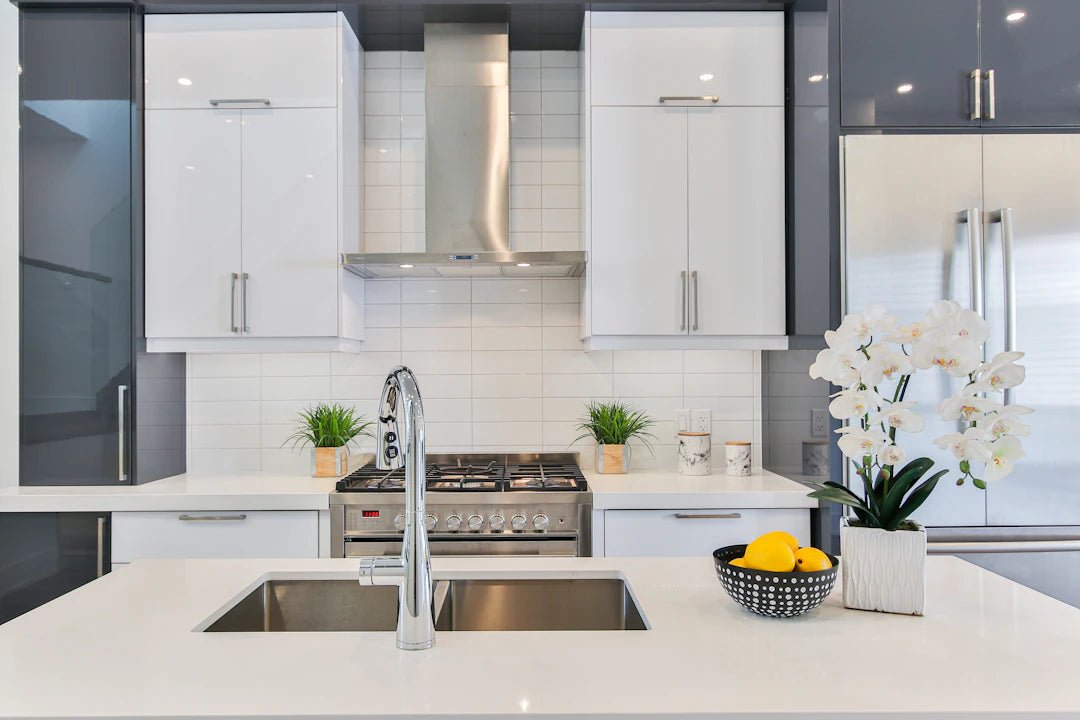Frequently Asked Questions
1. Why is it important to have a clean kitchen?
2. What cleaning supplies do I need to start cleaning my kitchen?
3. How do I declutter my kitchen before cleaning?
4. What are some effective surface cleaning techniques for my kitchen?
5. How can I maintain my kitchen cleanliness after a deep clean?
A clean kitchen is not only visually appealing but also crucial for maintaining a healthy home environment. With the right tips and techniques, you can transform your kitchen into a sparkling oasis that inspires cooking and entertaining. In this blog post, we’ll explore effective cleaning hacks to ensure your kitchen remains fresh and tidy. Let's roll up our sleeves and dive right in!
Step 1: Gather Your Cleaning Supplies
Before you begin, it's important to gather all necessary cleaning supplies. By organizing your tools, you’ll save time and ensure you won’t have to constantly get up to fetch cleaning materials. Here’s a handy list of what you'll need:
- All-purpose cleaner
- Glass cleaner
- Microfiber cloths
- Sponges and brushes
- Rubber gloves
- Baking soda
- Vinegar
- A broom and mop
Step 2: Declutter and Organize
Before you get into the nitty-gritty cleaning, start by decluttering your kitchen surfaces. This will make the cleaning process more effective and efficient. Here’s how you can do it:
Clear the Counters
Remove all items from your counters, including small appliances, spices, and utensils. Assess each item and decide if it belongs in your kitchen or if it can be stored away or discarded.
Organize Cabinets and Drawers
While decluttering, take the opportunity to organize your cabinets and drawers. You may want to group similar items together—store baking goods with baking utensils and cookware with pots and pans. Invest in dividers or bins to keep everything sorted neatly.
Step 3: Surface Cleaning Techniques
With your kitchen surfaces clear, it’s time to start cleaning. Each area requires specific techniques for the best results.
Counters and Tables
For countertops and tables, use an all-purpose cleaner or a mixture of vinegar and water. Wipe down the surfaces using a microfiber cloth, which traps dirt and grime effectively. Be sure to pay attention to seams and edges where crumbs often hide.
Appliances
Your appliances also need a good cleaning session. Here’s a breakdown:
- Stovetops: Remove knobs and grates if applicable. Clean with an appropriate cleaner and scrub stubborn stains with a non-abrasive scrub pad.
- Microwaves: Fill a bowl with water and vinegar, microwave it for a few minutes, and then wipe down the interior with a damp cloth.
- Refrigerators: Remove all contents and wipe down shelves with a mixture of baking soda and water. Don’t forget to check expiration dates while you’re at it!
Step 4: Focus on Floors
The floor often bears the brunt of spills and dropped food. Cleaning your kitchen floor may require different techniques based on the type of flooring you have:
Tile Floors
For tile, a mixture of hot water and a few drops of dish soap works wonders. Mop the area, making sure to get into the grout lines to prevent buildup.
Wood or Laminate Floors
Using a damp mop with a specific wood floor cleaner will help maintain shine without causing damage. Avoid over-saturating the floor, as excess water can warp the wood.
Step 5: Deep Clean Cabinets and Fixtures
Don’t forget about your cabinets and fixtures! They can accumulate grease and grime over time. Here are some effective deep-cleaning tips:
Cabinets
Wipe down cabinet doors with a mixture of vinegar and water or a specialized wooden cabinet cleaner. For stubborn stains, a gentle scrub can do the trick.
Sink and Faucets
Cleansing your kitchen sink is crucial. Sprinkle baking soda on the surface, scrub it with a sponge, and rinse with water. For faucets, a vinegar solution can break down mineral deposits, leaving them shiny and new.
Step 6: Post-Cleaning Maintenance
Keeping your kitchen clean doesn’t stop after one deep clean. Implementing daily and weekly routines can help maintain the freshness:
Daily Tasks
- Wipe down counter surfaces after meals.
- Load and unload the dishwasher promptly.
- Take out the trash regularly.
Weekly Tasks
- Clean the inside of the microwave and refrigerator.
- Dust and wipe down cabinet fronts.
- Mop the kitchen floor.
Transforming Your Kitchen with a Clean Slate
A clean kitchen serves as the heart of your home, a space where memories are made, and meals are savored. By following these tips and techniques, you’ll not only enjoy a clean environment but also inspire creativity in your cooking. Whether you’re preparing family dinners or hosting friends, a spotless kitchen can make all the difference. Embrace the power of cleanliness and start reaping the benefits today!
With a few hours of work and consistent upkeep, your kitchen can sparkle and shine, inviting you to spend more time cooking and enjoying your culinary adventures. So grab your cleaning supplies, gather your enthusiasm, and make your kitchen a space you love to be in—because a tidy kitchen is just a clean away!


Share:
Mastering Home Cleaning: How Often Should You Deep Clean?
The Ultimate Guide to a Pristine Refrigerator